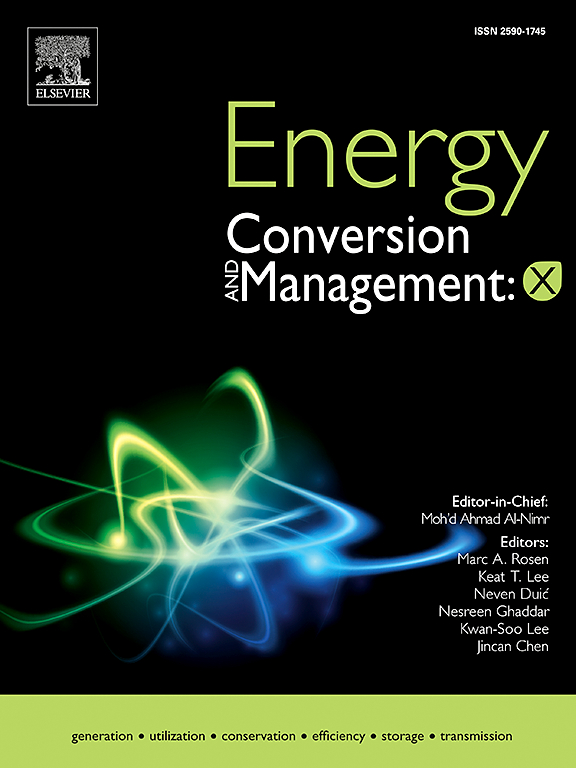区域供冷优化运行,实现城市冷能供应脱碳
IF 10.9
1区 工程技术
Q1 ENERGY & FUELS
引用次数: 0
摘要
区域能源系统在供热方面受到越来越多的关注,而在满足制冷需求方面,其应用仍然局限于热带国家。鉴于此,区域供冷系统的部署仍然存在许多障碍,需要详细的规划和相关的调度,以便在已经设置的应用很少的情况下找到方便。在本文中,作者研究了替代区域供冷装置布局的作用,包括联热;电力设备是为了满足冷却需求。一方面,区域供冷装置布局复杂性的增加增加了投资成本,另一方面,一次能源消耗的减少使这种替代方案具有吸引力和趣味性,特别是对于大容量。通过引入冷能平准化成本,在基准场景下,1千瓦时冷能的等效成本约为0.011欧元,而最佳优化布局的等效成本降至0.09欧元。除了经济调查之外,优化程序还确定,与基线相比,由两个双热电联产机组(3mwe内燃机)和3.3 MWc吸收式制冷机组成的系统可减少12%的碳排放,同时节省50万欧元,碳税税率为100欧元/吨。本文章由计算机程序翻译,如有差异,请以英文原文为准。

District cooling optimal operation to decarbonize urban cold energy supply
District Energy Systems have seen growing attention for heat supply while, for meeting the cooling demand still, the applications are limited to tropical Countries. Given that, the deployment of district cooling systems has still many barriers, requires detailed planning and related dispatch to be found convenient in contexts with few applications already set. In this paper, the authors investigate the role of alternative district cooling plant layouts that include Combined Heat & Power equipment’s to meet a cooling demand. If, on the one hand, the increase of the District Cooling Plant layout complexity increases the investment costs, on the other hand, the reduction of the primary energy consumption makes this alternative attractive and of interest, especially for large capacity. By introducing the Levelized Cost of Cold Energy, the equivalent cost for 1 kWh of cold energy is of about 0.011€ in the baseline scenario, while for the best-optimized layout decreases to 0.09 €. Aside from the economic investigation, the optimisation procedure identified that a system made up of two twin cogeneration units (3 MWe internal combustion engine) and 3.3 MWc absorption chiller leads to 12% reduction of carbon emissions compared to the baseline, together with 0.5 million € saving, accounting for a carbon tax rate of 100 €/ton.
求助全文
通过发布文献求助,成功后即可免费获取论文全文。
去求助
来源期刊

Energy Conversion and Management
工程技术-力学
CiteScore
19.00
自引率
11.50%
发文量
1304
审稿时长
17 days
期刊介绍:
The journal Energy Conversion and Management provides a forum for publishing original contributions and comprehensive technical review articles of interdisciplinary and original research on all important energy topics.
The topics considered include energy generation, utilization, conversion, storage, transmission, conservation, management and sustainability. These topics typically involve various types of energy such as mechanical, thermal, nuclear, chemical, electromagnetic, magnetic and electric. These energy types cover all known energy resources, including renewable resources (e.g., solar, bio, hydro, wind, geothermal and ocean energy), fossil fuels and nuclear resources.
 求助内容:
求助内容: 应助结果提醒方式:
应助结果提醒方式:


